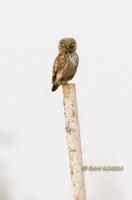|
| Query: Birds of europe | Result: 657th of 1706 | |
Little owl (eastern race) C20D 03388.jpg

| Resolution: 395x600
File Size: 42222 Bytes
Date: 2005:05:11 10:06:52
Camera: Canon EOS 20D (Canon)
F number: f/8.0
Exposure: 1/500 sec
Focal Length: 840/1
Upload Date: 2008:02:14 15:30:34
|
Little owl (eastern race) C20D_03388.jpg
Little owl (eastern race) C20D_03388.jpg photo - Ran Schols photos at pbase.com
Birdtrip CHINA (Happy Island-Beidaihe-Huairo) may 2005
>
Little owl (eastern race) C20D_03388.jpg
previous
next
11-MAY-2005
Little owl (eastern race) C20D_03388.jpg
China (Happy Island-Beidaihe-Huairo)
Canon EOS 20D
1/500s f/8.0 at 840.0mm iso200
full exif
other sizes:
|
Comments |
|---|
| | Guest |
|
| Little Owl (Athene noctua) is a bird which is resident in much of the temperate and warmer parts of Europe, Asia east to Korea, and north Africa. |
^o^
Animal Pictures Archive for smart phones
^o^
|
|
|

